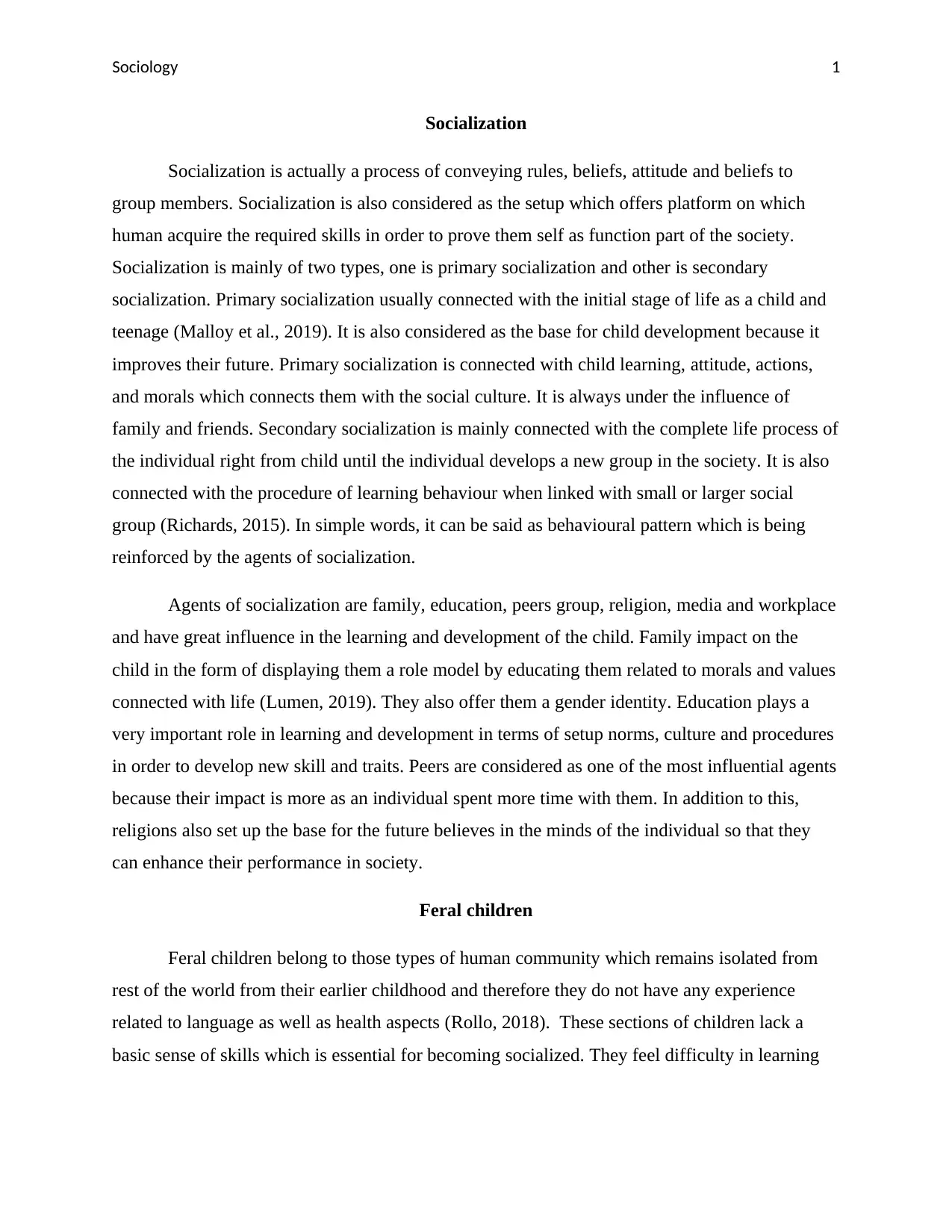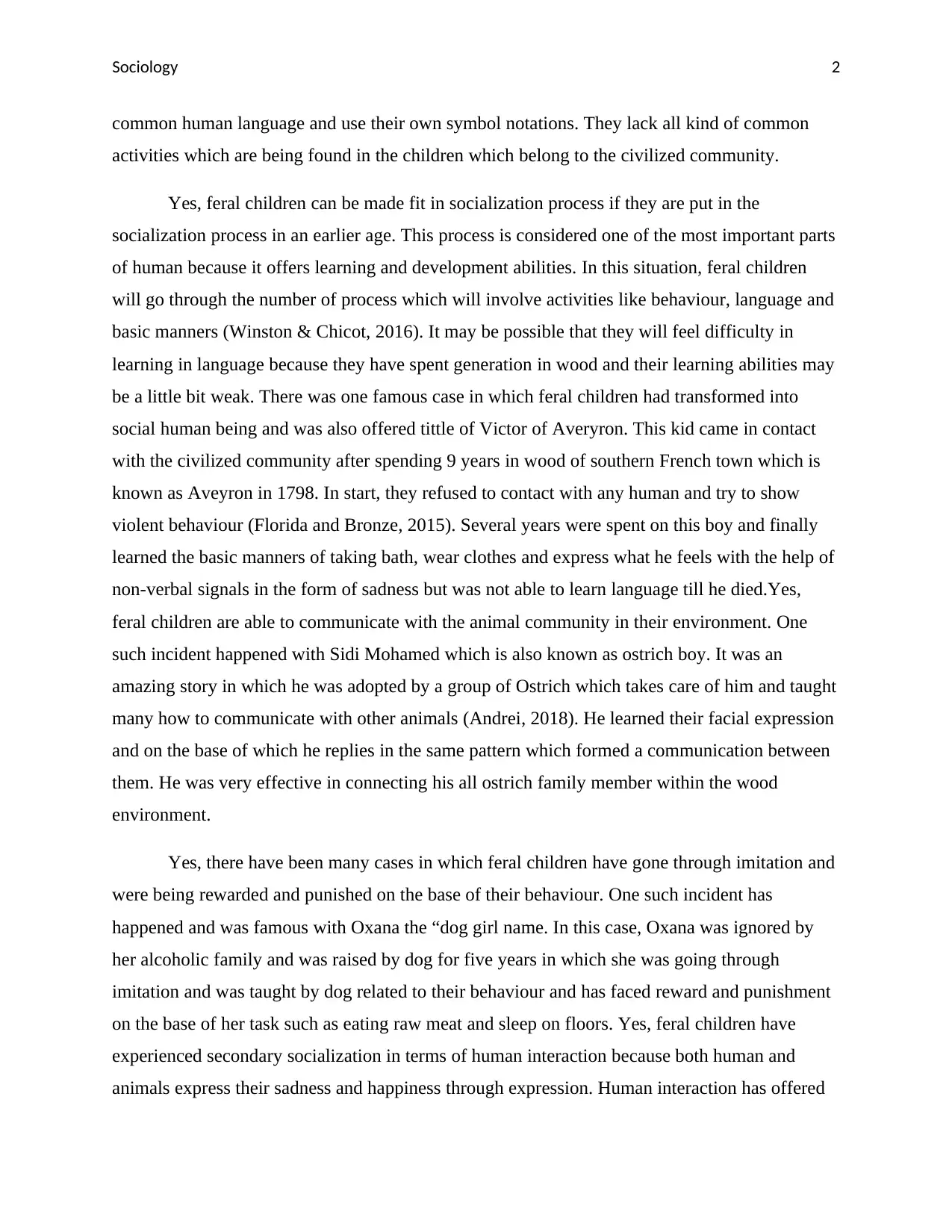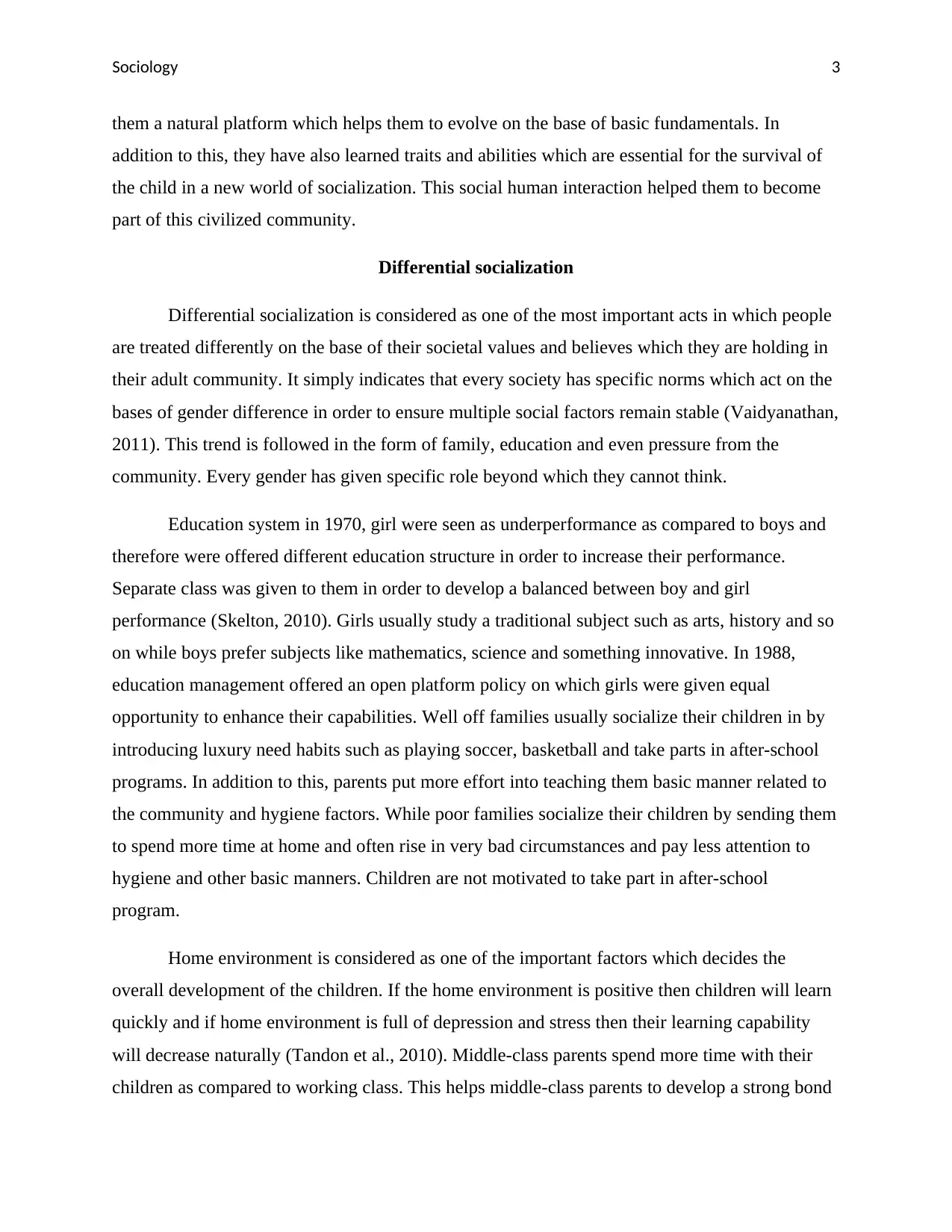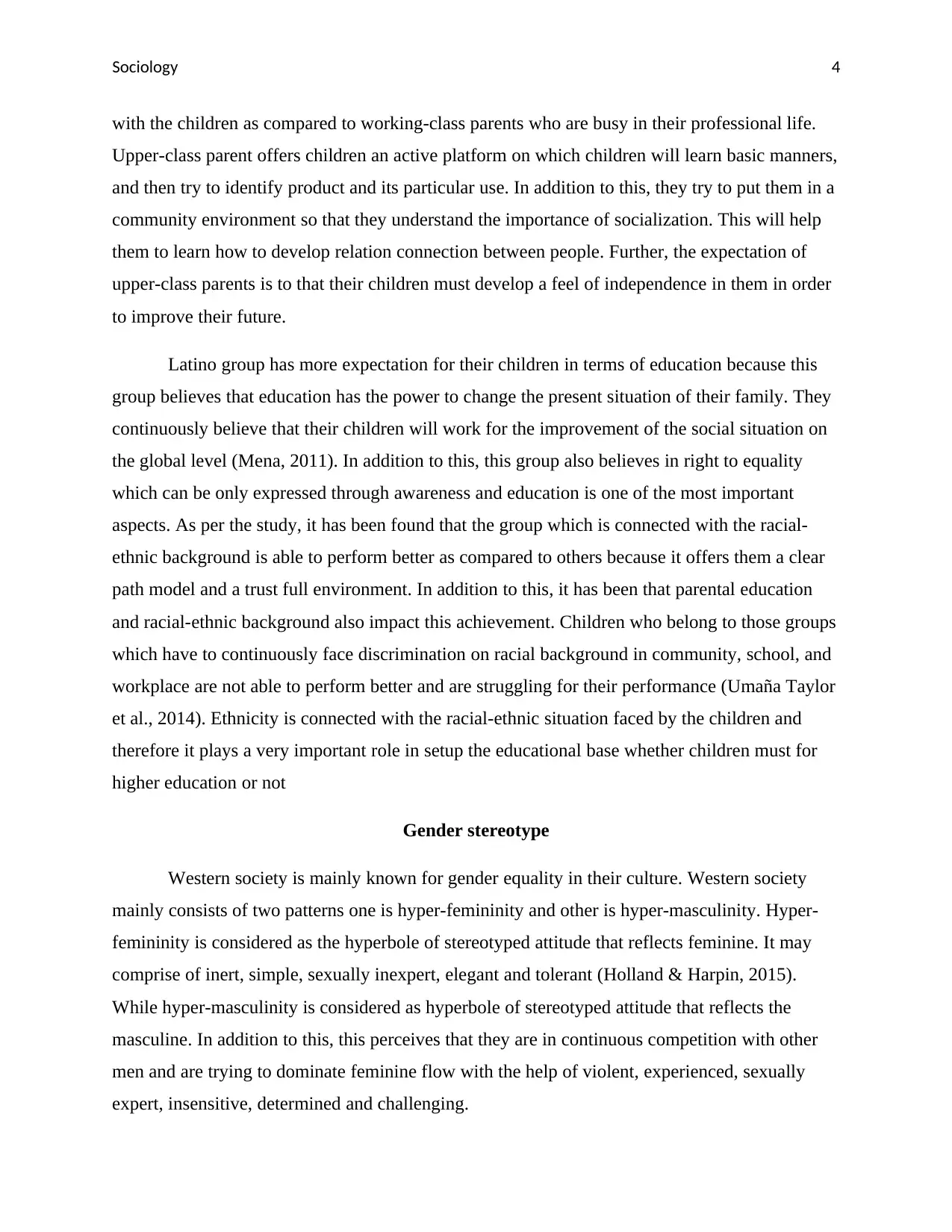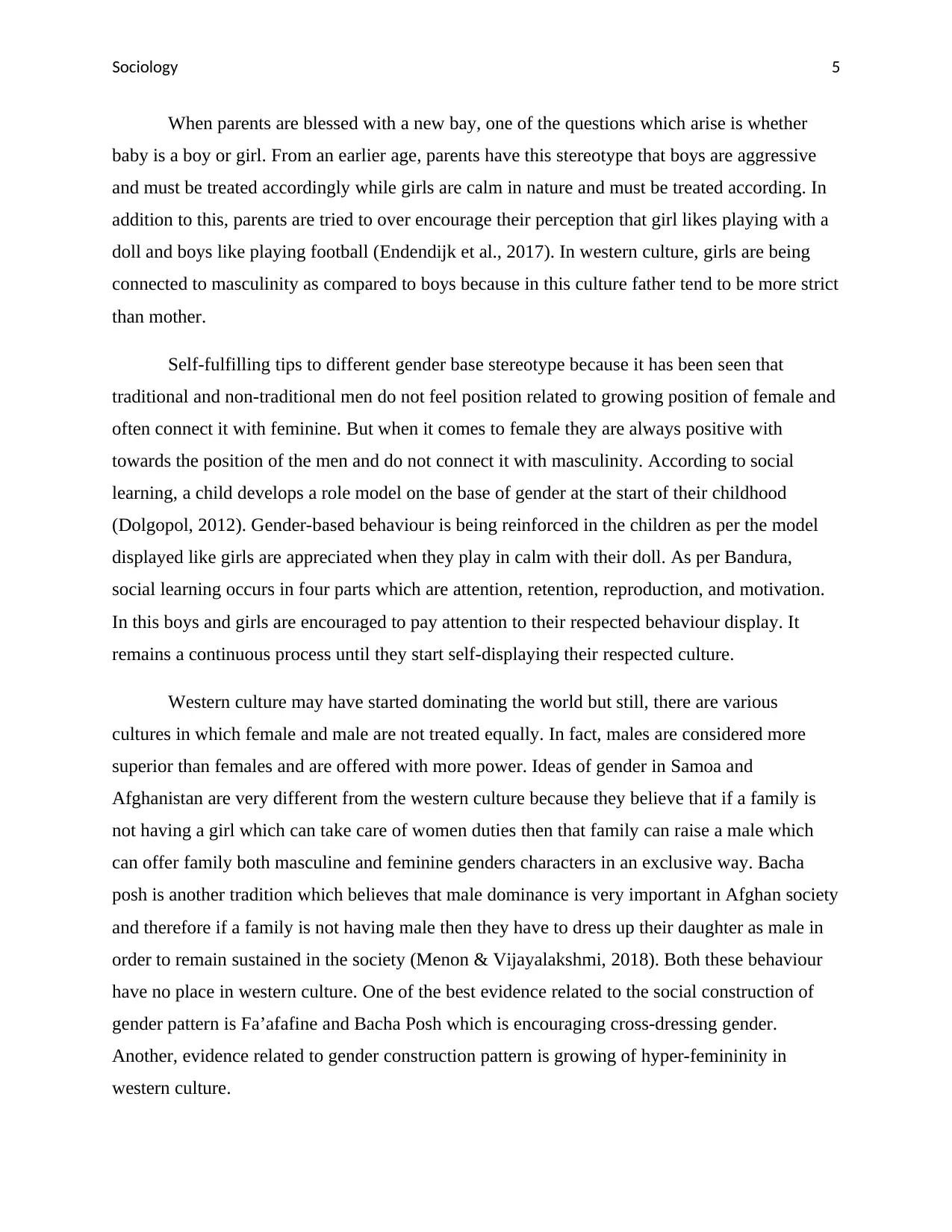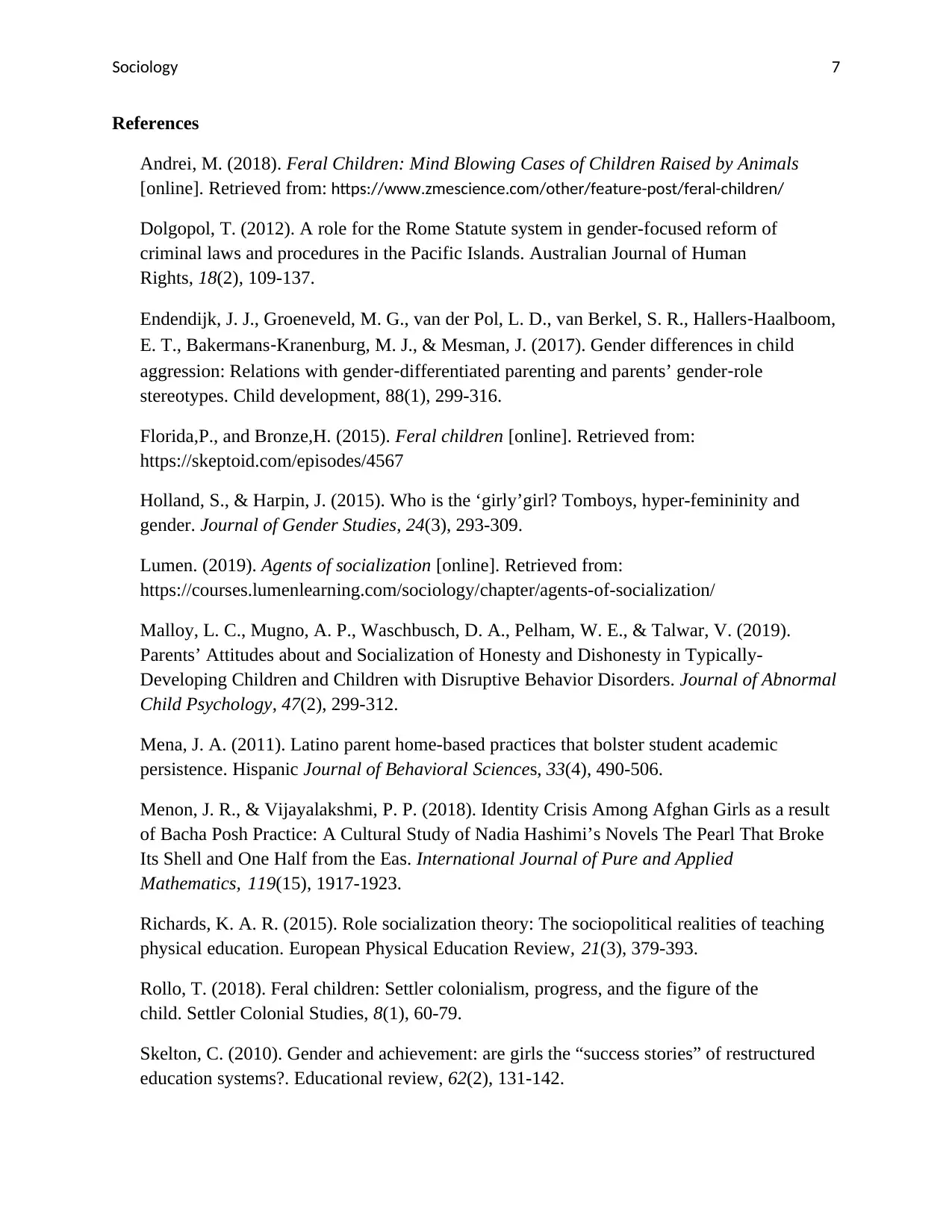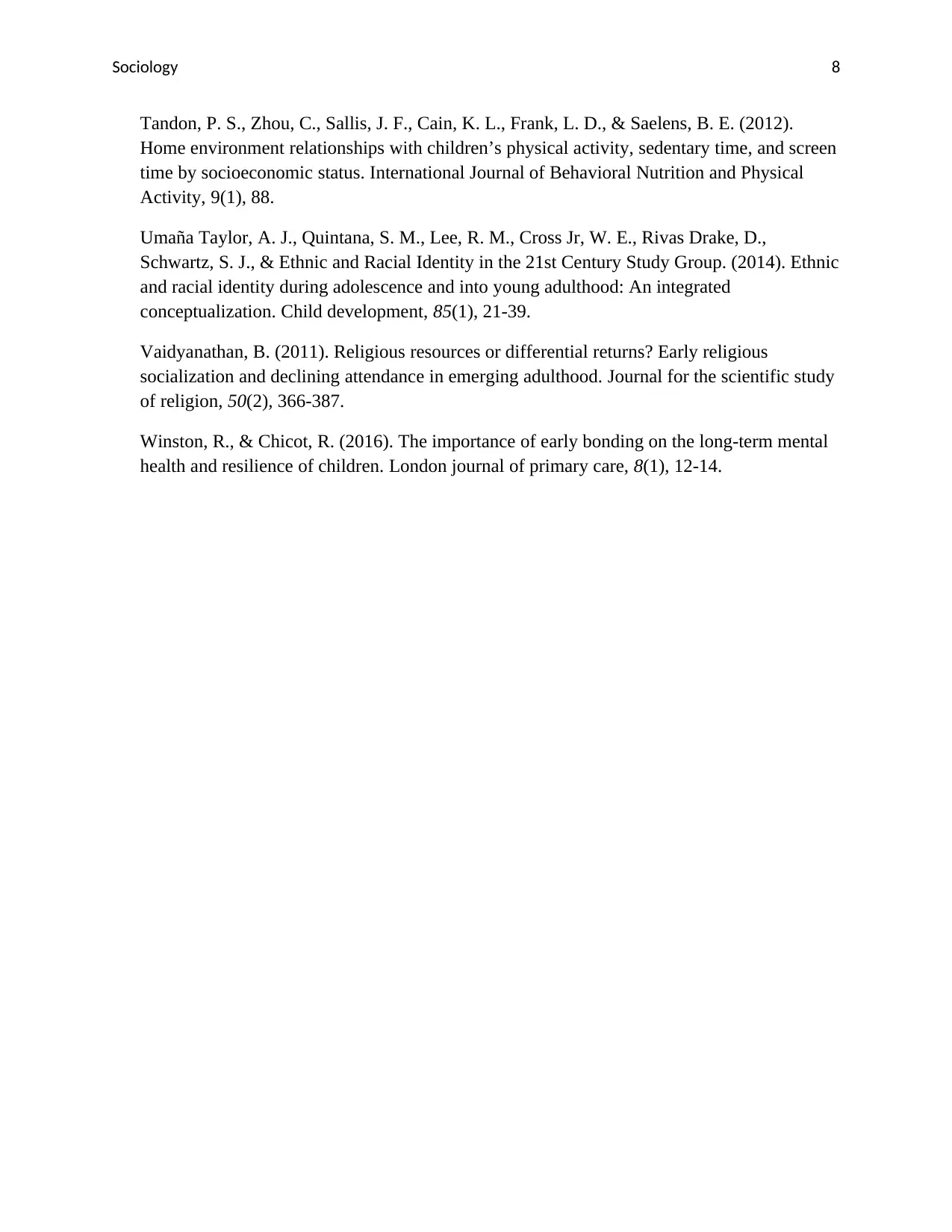This document discusses the concepts of socialization and feral children. It explores the different types of socialization, such as primary and secondary socialization, and the impact of agents of socialization, including family, education, peers, religion, media, and workplace. The document also examines the possibility of feral children being integrated into society through the socialization process. It provides examples of feral children who have successfully undergone socialization and highlights the communication abilities of feral children with animals. Additionally, the document discusses the phenomenon of differential socialization, where individuals are treated differently based on societal values and beliefs. It explores how gender stereotypes are perpetuated in Western society and the impact of self-fulfilling prophecies. Overall, this document provides a comprehensive overview of socialization and its various aspects.
![[object Object]](/_next/static/media/star-bottom.7253800d.svg)
![[object Object]](/_next/static/media/star-bottom.7253800d.svg)

